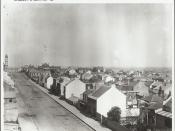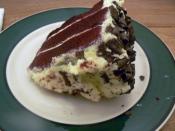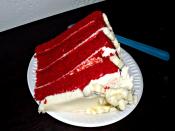It has been suggested, and I agree, that beyond, or behind, the topical subject, there is--what is rarely lacking in de la Tour's work--a religious implication.
Yet it is an accomplished picture. The figures are effectively placed: the courtesan-hostess sits central and all but full-faced, one hand on the table holding her cards, covered, the other held out towards the maid who stands on her right with wine-glass and flask, her head bent and her face in profile. The "trickster" sits on the left, next to the maid; his back is three-quarters turned, right elbow resting on the table and right hand casually holding up his cards; he looks back nonchalantly over his shoulder, bringing his face into three-quarter view. At the opposite end of the table the young prodigal sits bolt upright, in profile, looking down intently at the cards that he holds in both hands, as if debating which to play.
The tale is well if a touch obviously told in the young fool's expression of stupid importance, the blank colourless mask of the courtesan, the sidelong glances between her and the maid, who as she stands can have overlooked the cards so as to give secret signs to her mistress; and in the hand held out ostensibly for the wine-glass but with one finger half pointed, a gesture of which the purport is seen in the hidden ace that her affectedly inattentive partner slips out from under the back of his belt.
The lighting is not strikingly dramatic, but the scene is full of light. Moderate sunlight from the left front illuminates it, falling with chief emphasis on the face and expansively displayed bosom of the courtesan and the thick undistinguished profile of the prodigal, leaving the other two faces in half shadow, and throwing accents of...


